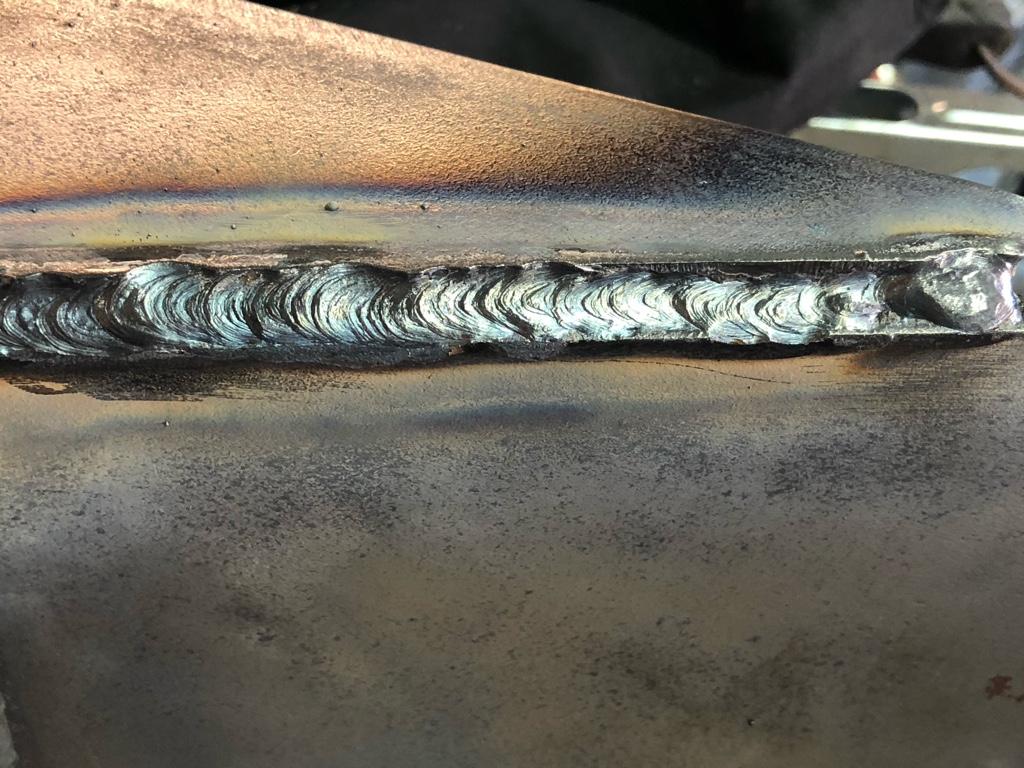Preventing Weld Undercut Demystified: Methods for Success
Preventing Weld Undercut Demystified: Methods for Success
Blog Article
Comprehending the Causes and Solutions for Undercut Welding in Metal Construction Procedures
In the realm of metal manufacture processes, the event of undercut welding poses a substantial challenge that requires a detailed understanding of its causes and practical remedies. The complex interaction of numerous elements throughout welding procedures can result in this undesirable phenomenon, impacting the architectural honesty and overall quality of the bonded joints - Preventing weld undercut. By exploring the origin creates of undercut welding and exploring effective remedial measures, producers can raise the standard of their craftsmanship and ensure the manufacturing of perfect steel parts
Typical Causes of Undercut Welding
Often forgotten in metal construction, undercut welding occurs as a result of different variables that demand meticulous attention and know-how to be successfully alleviated. One common root cause of undercut welding is extreme warm input. When the warm input is expensive, it can cause the melting and succeeding disintegration of the base product along the edges of the weld joint, developing a groove or undercut. In addition, inappropriate welding methods, such as utilizing the incorrect welding angle or travel speed, can also add to damage development. Insufficient securing gas insurance coverage is an additional crucial factor that can cause undercutting. Insufficient gas insurance coverage fails to secure the weld pool adequately, leading to oxidation and undercut issues. The option of welding parameters, such as voltage, current, and cable feed rate, plays a considerable duty in the occurrence of undercut welding. Comprehending these usual causes is critical for implementing preventive measures and guaranteeing high-quality welds in steel fabrication processes.
Impact of Incorrect Welding Parameters
Imprecise welding specifications can substantially endanger the honesty and high quality of welded joints in steel fabrication processes. The impact of inaccurate welding criteria materializes in numerous ways, leading to structural weak points and problems in the bonded elements. Meticulous focus to welding criteria is extremely important to make certain the manufacturing of premium welds with the desired mechanical properties and architectural honesty.
Result of Improper Torch Angle
Improper lantern angle in welding operations can substantially influence the top quality and integrity of the last weld joints in metal construction procedures. Damaging is a common welding flaw where a groove creates along the weld toe, compromising the joint and jeopardizing its structural integrity.
A torch angle that is too steep can lead to not enough penetration, incomplete blend, and raised spatter. On the other hand, a lantern angle that is as well shallow can result in too much infiltration, burn-through, and distortion of the base material. Preventing weld undercut. Proper torch angle is vital for guaranteeing consistent weld quality, strength, and look
To avoid undercutting and various other flaws caused by inappropriate torch angles, welders must be educated to maintain the correct torch angle throughout the welding procedure. Regular surveillance and modification of torch angles during welding can assist accomplish sound welds with marginal flaws.
Function of Inadequate Welding Techniques

Another aspect of inadequate welding strategies is incorrect weld prep work. Inadequate cleaning of the base metals, incorrect joint layout, or inadequate side prep work can all add to undercut welding. Inadequate shielding gas coverage or utilizing the wrong type of gas can result in insufficient combination and the development of undercut problems.
To address the duty of insufficient welding strategies in steel fabrication procedures, it is vital to give comprehensive training for welders. Proper education on welding parameters, joint preparation, and securing gas option can assist prevent undercut welding and guarantee top quality welds in metal manufacture jobs.
Reliable Solutions for Undercut Welding
Dealing with undercut welding in steel construction calls for applying effective services to boost weld top quality and architectural stability. Among the primary remedies to combat undercut is to readjust welding criteria such as voltage, present, and travel rate to ensure appropriate warm input and fusion. By fine-tuning these setups, welders can protect against excessive melting of the base metal and filler material, minimizing the chance of undercut formation.
Furthermore, correct joint preparation is critical in avoiding undercut. Making certain tidy base steel surfaces without pollutants and utilizing the ideal bevel angle can assist advertise far better weld infiltration and reduce the risk of undercut - Preventing weld undercut. Using ideal welding techniques, such as oscillating the lantern or weaving, can additionally assist in distributing warmth equally and filling the weld joint appropriately, decreasing the possibility of undercut issues
Furthermore, choosing the right welding consumables, including electrodes and filler metals, is vital in reducing undercut. Making use try these out of products with appropriate chemical structures and mechanical buildings can add to accomplishing audio click now welds with marginal undercut. Regular examination and high quality control procedures ought to also be implemented to spot and resolve undercut issues promptly, guaranteeing the overall integrity of fabricated steel elements.

Conclusion
In verdict, understanding the reasons and remedies for undercut welding in steel manufacture processes is essential for accomplishing premium welds. By dealing with common reasons such as inaccurate welding parameters, improper torch angle, and poor welding methods, welders can stop undercutting and make sure solid, long lasting welds. It is necessary to take note of these variables and apply reliable solutions to boost the overall welding procedure and last item quality.

Report this page